After our adventures in NYC, we drove to the Boston area on December 11. Our first stop was Wellesley College to see Sarah’s youngest sister, Amy. We walked into the ville for lunch at Vidalya’s, “Wellesley’s truck stop”. For anyone who knows the town of Wellesley, the notion that it has a truck stop is foolish. There’s no parking for large trucks, and the menu contains things like sweet potato fries. The place wasn’t very authentic, but the food was tasty and we had a nice visit. After lunch, we walked back to campus and decided to stop at the Science Center. The Wellesley Science Center looks similar to the George Pompidou Center in Paris. The outside is concrete and brightly-colored piping; inside is the original brick building. We ran into my computer science advisor and had a nice visit with him. While we were there, we also checked out the greenhouse.
Late afternoon, we left for Randolph where we were spending the night with Brian’s college friend, Kristen, and her husband, Matt. They’ve done extensive home renovations – we ere quite impressed. They had completely redone the family room and kitchen and all the rooms had been painted in festive colors. We went for Thai food and called it an early night so Sarah could catch up on some much needed sleep.
On Wednesday, we went to Salem, Massachusetts. Despite growing up in New England, Sarah had never visited Salem before. All we really knew about Salem was that it was the location of the infamous witch trials in the late 1600s and home of Nathaniel Hawthorne (author of The Scarlet Letter which Sarah just happened to have read recently). It turns out that there is a lot more history there. The town was originally a fishing town in the 1600s, supported primarily by cod. Later, Salem became a prosperous port, with its ships sailing to ports around the world. During the American Revolution, many of the trading ships became privateers helping with the war effort. As a result of its maritime history, parts of the town are now protected as part of a National Historic Site.
We started the day taking a walking tour of the historic waterfront area. The weather started very gray but quickly turned into a sunny crisp day. The tour first passed a full-size, functional replica of the Friendship.
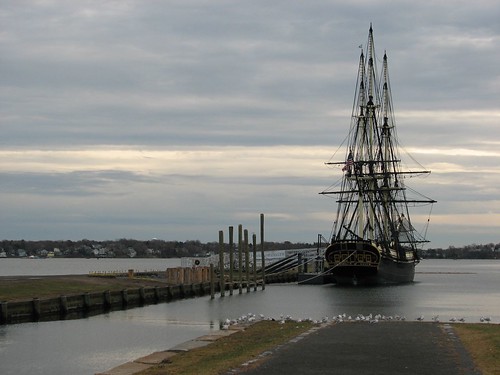
The original Friendship was a merchant ship built in 1796-1797. It made 15 voyages around the world before being captured by the British in 1812.
We continued down Derby wharf (named for a prominent merchant family). Looking back at the Friendship, you can see other historic buildings along the waterfront.
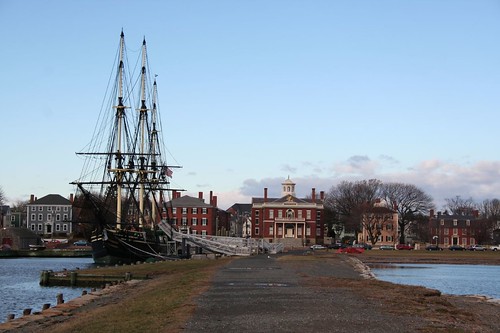
At the end of the wharf was a lighthouse, built in 1871 to guide ships into port.

By this point in time, the port at Salem had declined. The port channel is narrow and shallow, and the increasingly large trading ships began to favor the ports of New York and Boston over Salem.
Back on the main waterfront street, we passed the Customs House:
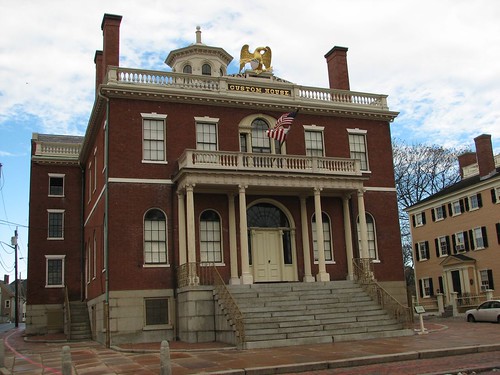
Here, goods brought in from around the world were inventoried and customs duties were paid. In those days, there was no income tax, and customs duties made up the majority of government revenue.
Next to the Customs House is the Hawkes House, which was built by Elias Derby, who used it as a warehouse, and was later completed by Benjamin Hawkes.
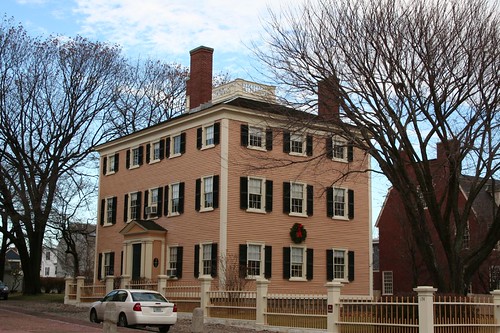
Next door to the Hawkes House was the Derby House, built by the most famous of Salem’s shipowners. Built in 1762, this building is the oldest surviving brick house in the town.

Behind the Hawkes and Derby houses was the Narbonne House. This house has been modified at various times but is representative of houses owned by craftsmen and tradesmen in the late 1600s.
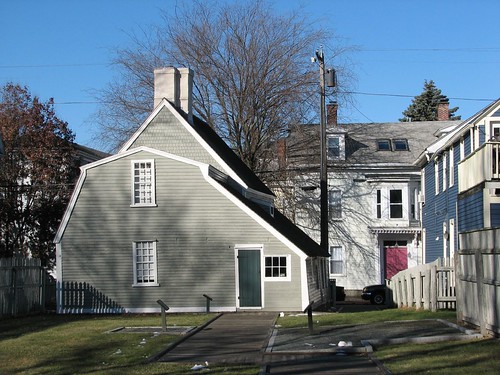
Also behind the Customs House were the Scale House and a replica warehouse:
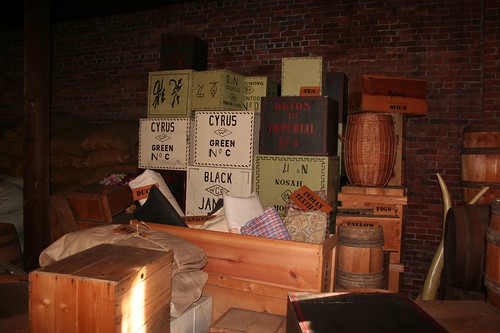
Our last stop of the historic walking tour was the West India Trading Company store.
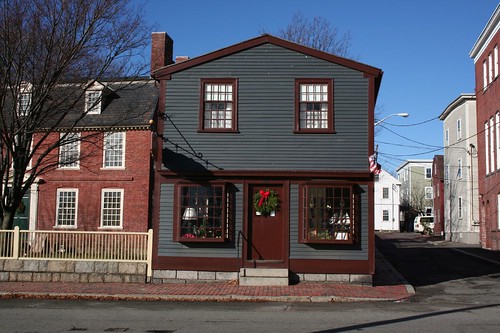
The store had been moved from the other side of the Derby House and today is run by the National Park Service. It carries goods similar to those that would have been sold in the 1800s, such as tea, spices, and china.
From here, we walked down the street to the House of Seven Gables, which is famous for the book of the same name by Nathaniel Hawthorne.
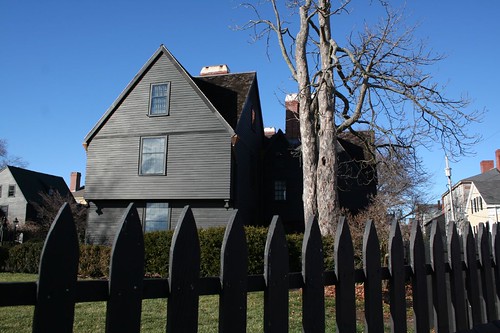
We decided to pass on the tour of the house and instead headed back to the middle of town. After a quick lunch, we went to one of the National Park visitors centers and watched their film on the area and took in the exhibits. It was mid-afternoon before we finally saw anything relevant to the witch trials, which was why we’d stopped in the first place. We walked through the Burying Point Cemetery, which has some of the oldest graves in the country. There were some interesting headstones:
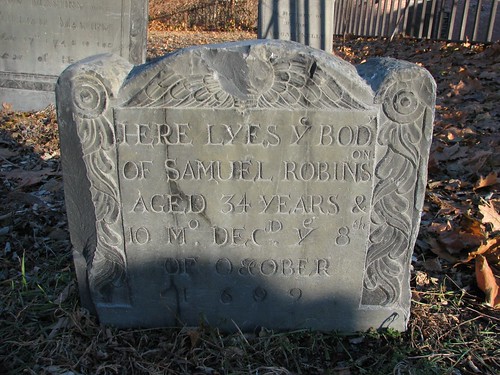

It was odd to see the very old graves with such a modern backdrop:
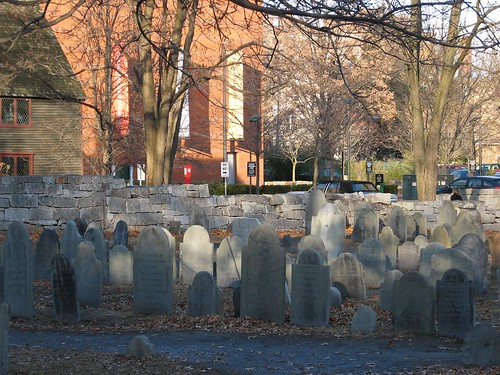
Besides old graves, there was cute wildlife:
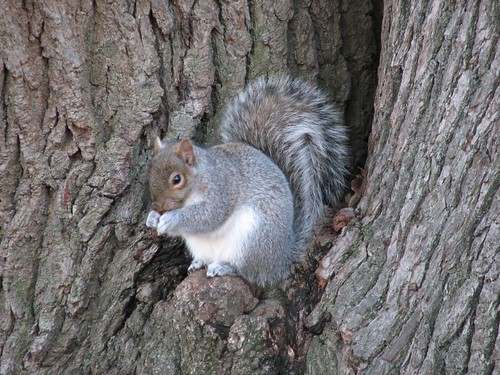
Just outside the cemetery was a monument for the victims of the witch trials. Each person who was convicted and executed has a stone around the edge of the monument.


Our last stop in Salem was the Salem Witch Museum.
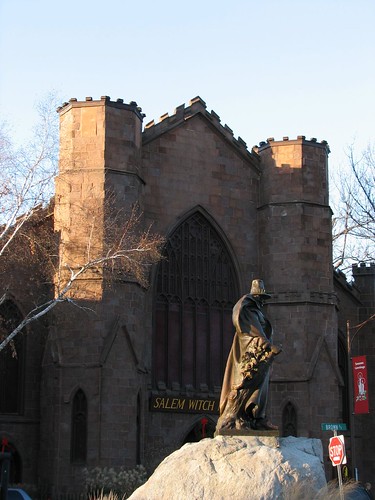
The saga of the witch trials began in 1692 when two girls (Betty Parris, age 9, and Abigail Williams, age 11) began to have seizures that couldn’t be attributed to any physical ailment. Soon other girls displayed similar fits, and they were deemed to be afflicted by witches. The girls gave the names of the witches who supposedly possessed them, and soon dozens of men and women were standing trial for witchcraft.
“Spectral evidence,” simply the testimony of the supposedly afflicted girls claiming that they could see the shapes of the witches afflicting them, played a key role in convictions. The confessions of the accused, extracted under pressure, were also a significant piece of evidence. In the end, 19 people were convicted of witchcraft and hung. One of the convicted men recited the Lord’s Prayer perfectly right before he was to be hung. This was supposed to be impossible for a witch and should have been proof of his innocence, but he was hung nevertheless.
In one particularly gruesome case, a man named Giles Corey was subjected to “pressing” – being physically pressed underneath a gradually increasing load of stones – because he refused to enter a guilty or not-guilty plea. He never did enter a plea, and after two days of pressing, he died when his chest was crushed.
The witch trials are subject to ongoing speculation due to the questions that remain unanswered. The biggest: Assuming that they weren’t really possessed by witches, what was really wrong with the girls? One theory is that they had a disease called ergotism, which is caused by the consumption of rye bread infected with a particular fungus. Rye was common in the area, and the moist climate would have contributed to the growth of the fungus.
The Salem Witch Museum featured an elaborate 360-degree show with wax figures that told the history of the witch trials. After the show, there was a small exhibit area showing various images of witches – from the Hollywood Wicked Witch of the West to men and women who practice Wicca.
With a full day of site seeing under our belts, we set off for Maine, where we’d be spending Christmas with Sarah’s family.
No comments:
Post a Comment